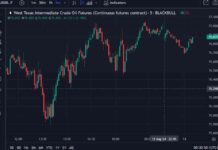German Inflation Slows More Than Expected
German inflation data has raised concerns as it showed a greater slowdown than anticipated. According to a preliminary estimate from Destatis, the consumer price index in Germany fell by 0.1% in August. This decline led to annual inflation slowing to 1.9%, compared to 2.3% in the previous month and below the 2.1% expected by economists. These weaker-than-expected readings have put pressure on the Euro currency.
The release of state-specific data later in the day further highlighted the weakening inflation trend in Germany. This data has added to the evidence of an economy that is struggling to maintain momentum. The implications of this data are significant, as it is likely to impact Friday’s Euro-zone CPI estimates. At the beginning of the week, the average forecast was for a decline in the Euro-zone CPI from 2.6% to 2.2%. However, given the slowdown in German inflation, a further deceleration to 2.0% would not be surprising.
The news of Germany’s slowing inflation had an immediate effect on the EUR/USD pair, causing it to fall to 1.1070. This decline is part of a broader trend of negative surprises in macroeconomic data coming out of the Eurozone, particularly from its powerhouse economy, Germany.
Strong US Economic Data Contrasts with German Trends
In stark contrast to the weakening inflation in Germany, macroeconomic data from the United States continues to show strength. A revised estimate of Q2 GDP growth in the US was reported at 3.0%, up from the previous estimate of 2.8%. Additionally, there was a decrease in weekly jobless claims from 233K to 231K, indicating a healthy labor market. While continuing claims rose slightly from 1855K to 1868K, both figures remain at historically low levels.
The robust economic data from the US raises questions about the necessity of a 50-point cut in the Fed Funds rate in September. With the economy still showing signs of strength, the futures market is currently pricing in a 33% chance of a 50-point cut, with a higher probability (67%) of a 25-point cut. This discrepancy in market expectations leaves room for potential dollar strength as investors reassess their positions.
The Federal Reserve is closely monitoring economic indicators and is unlikely to make a final decision on interest rates until after key data releases. These include the employment data due in early September and the inflation data expected in the middle of next month. The divergence in economic performance between Germany and the US is likely to influence global forex trading in the coming weeks.
Impact on Forex Trading and Market Sentiment
The contrasting economic data from Germany and the US is having a significant impact on forex trading and market sentiment. The Euro has weakened against the US Dollar following the news of Germany’s slowing inflation, while the Dollar has strengthened on the back of strong US economic indicators.
Investors are closely monitoring the developments in both economies to gauge the potential for future monetary policy decisions. The divergence in economic performance between Germany and the US is creating opportunities for traders to capitalize on these fluctuations in the forex market.
The uncertainty surrounding the Fed’s interest rate decisions adds another layer of complexity to forex trading. Traders will be closely watching upcoming economic data releases to determine the direction of central bank policy and its implications for currency movements.
In conclusion, the comparison of German inflation and US economic data highlights the diverging trends in two of the world’s largest economies. These differences are shaping market sentiment and influencing forex trading strategies. As investors navigate through this landscape of contrasting economic indicators, the importance of staying informed and adaptable cannot be overstated.

















